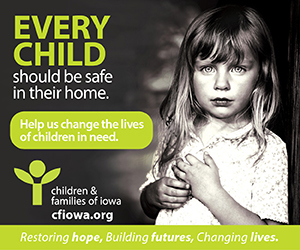Hospitals struggle to serve more uninsured patients

Broadlawns Medical Center and Des Moines’ two not-for-profit health systems have a long road ahead of them to improve the region’s health-care safety net.
Last month, a steering committee led by former Gov. Robert Ray released an in-depth study of key issues affecting the uninsured and underinsured in Polk County. Now area health-care providers are grappling with how to address its recommendations, which include providing Broadlawns, the county’s public hospital, with infrastructure improvements and additional support in order to continue serving the growing population in need of its services in Polk County.
“With this study, I found that those who offer hospital care were cooperative and all of them came to the table to acknowledge that we have a serious problem with the uninsured’s access to care,” said Ray. “The report does not resolve all the problems, but it does give you a basis on which the matter can be discussed.”
Researchers from George Washington University’s School of Public Health and Health Services assisted the 26-person Blue Ribbon Steering Committee in assessing the region’s available health services and the access that people who don’t have health insurance or other resources to pay for their health care have to them. The committee made four recommendations based on their findings.
The first option the committee presented was to strengthen Broadlawns through increased public support.
The second option was to strengthen Broadlawns through targeted growth in its training programs.
The third option was to develop a partnership between Broadlawns and one of the existing Des Moines hospital systems. This could give Broadlawns patients’ more access to specialty and tertiary care, and the hospital could also benefit by sharing in economies of scale.
The fourth option was to expand and strengthen the community health center network. Currently, only one federally qualified health center, Primary Health Care Inc., exists in Polk County, and only eight across the entire state of Iowa. The federal government is trying to double the number of these health-care providers across the country.
David Vellinga, president and CEO of Mercy Medical Center-Des Moines, said his hospital board recently discussed the study and the four policy options at its meeting on June 24, and plans further discussion at its August meeting.
“We’re taking the report very seriously and spending a lot of time at the executive management level and at the governance level, discussing what is most appropriate for Mercy,” he said. “This is a six-month-to-a-year discussion, I’m sure.”
Mikki Stier, Broadlawns’ senior vice president for government and external relations, said she would like to know what type of support the hospital can expect sooner than that. She said the hospital’s 23-year-old physical plant is in dire need of updates, particularly its emergency department, radiology department and laboratory areas.
“As the level of uninsured has continued to grow, we have continued to focus our available resources on patient care, as opposed to building improvements, which we are long overdue for,” Stier said. “I think the last time it was updated with a major revision was in the early 1990s.”
Iowa Health-Des Moines, which operates Iowa Lutheran Hospital, Iowa Methodist Medical Center and Blank Children’s Hospital, already works collaboratively in several ways with Broadlawns, according to Sid Ramsey, the hospital system’s
vice president of business development and marketing. Iowa Health plans to build on this foundation as it considers how to take this support to the next level.
“For us, the George Washington University study was really a wake-up call for us to build on what we are already doing and find creative ways with the rest of the health-care community to meet the needs of the growing number of people who either don’t have health insurance available to them, feel that they cannot afford health insurance or elect not to purchase into a plan,” Ramsey said.
“Broadlawns is a key component in the medical safety net, and we’re ready to roll up our sleeves and see what solutions we can bring to the table.”
Costs of care
Polk County hospitals have noticed an increase in the number of uninsured people coming to them for medical care. In 2003, 62 percent of the patients admitted to Broadlawns Medical Center were uninsured. According to Mikki Stier, the county hospital’s senior vice president for government and external relations, this was about a 20 percentage point increase over five years ago.
Mercy Medical Center-Des Moines and Iowa-Health Des Moines also report increases in the number of uninsured patients, and it’s costing them millions each year. In 2004, Iowa Health Des Moines provided more than $10 million in charity care to patients in Polk County, which was 1.8 percent of its gross revenues. Mercy Medical Center-Des Moines provided about $19 million in charity care, which was 2.6 percent of its revenues.







